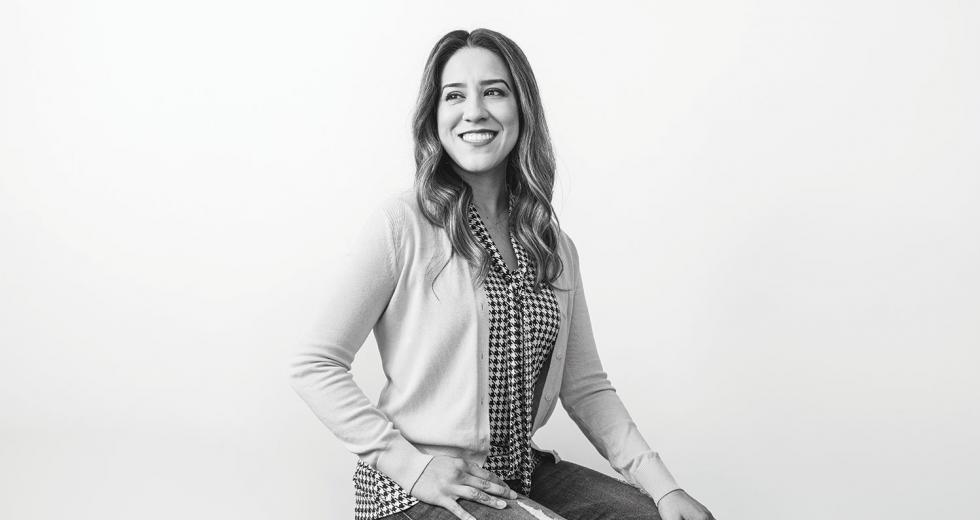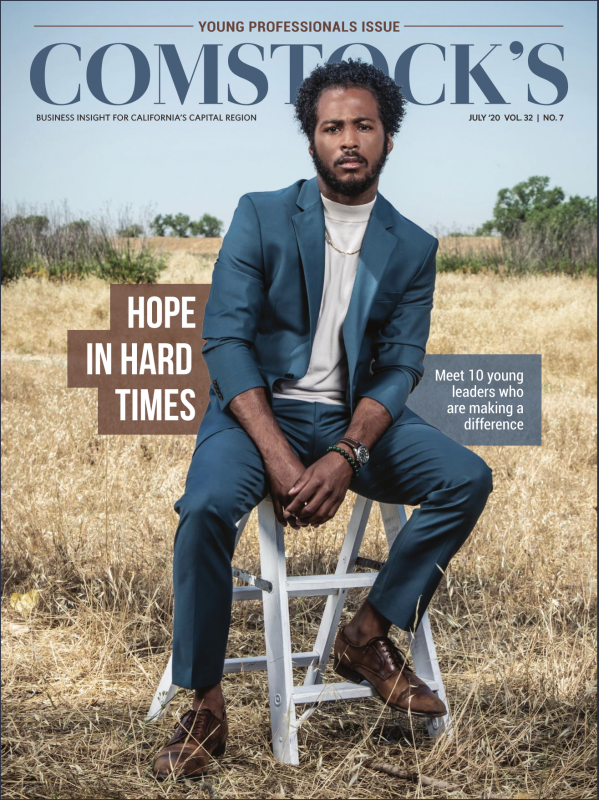Belen Flores became executive director of the California Center for Civic Participation in June 2019, after eight years working full time for the Sacramento-based nonprofit. Founded in 1981, the nonpartisan organization aims to engage young people — particularly those who have been historically disenfranchised — in the political process through civic education programs. Comstock’s spoke with Flores about how her organization has adapted in recent months and why its mission remains important.
Your organization is about empowering youth to be more engaged in democracy. Why is that important, and how does your organization aim to achieve that goal?
It’s important that we engage young people because they’re going to be the ones stepping into whatever state we leave democracy in. … We really need (the) youth voice to be infused into the political process, into the voting process, to get the best outcomes possible for everyone. How do we do that? I would say primarily California Center is, and always has been, a civic education organization. So we really focus on educating high school students in the political process. We’re setting them up with actual policymakers. We’re setting them up in meetings with state legislators, local government officials to talk about the policy firsthand but also engaging them in other areas of government. Like we’ll set them up at the state Capitol for committee hearings and mock debates, so they can actually be in the driver’s seat and feel how it would feel to be a person with those decision-making powers. That experience is so, so important, especially nowadays in California. We only require one semester of government (education) for high school students, and, in the classroom setting, we found that model just isn’t enough for them to get excited about public service (and) engaging in their community.
We take a holistic approach to our education program. So that means networking with people in and around the Capitol community. It means obtaining a mentor who can mentor them for a year with whatever it is that they need — mentorship with just someone who’s there for them, who can listen, who’s available to help them envision their future and what career they might want to go into.
Our approach also includes everything through an equity lens. Anything we teach them or expose them to, we want to make sure that they’re learning about intersectionality.
You’ve been executive director for about a year. What have been some of your early goals and challenges you’ve encountered along the way?
My goal, I would say, is to be collaborative with other (youth) organizations and try (to) find innovative ways to get our youth to connect to each other in the different communities and really feel like they’re not alone in their struggles. … Another one is to make sure that as an organization … we’re keeping an eye on innovation and knowing when to change our approach in terms of educating and engaging our young people. It’s about looking at the political environment — whether it’s state or local. How is that changing? And how can we place our youth in spaces where those important decisions are being made?
Historically, the essence of organization has been physically bringing young people together. And now we can’t (meet) physically, we can’t build that trust one-on-one, (we) can’t see each other in a physical sense. How do we as an entity still cultivate youth empowerment from a distance and virtually on a screen? Because we don’t know how long all of this social distancing is going to last. We can have another wave of (the coronavirus) in the fall. We can have another wave a year from now. If we’re not thinking ahead, we’re not going to be reaching the youth that we really intended to reach and make an impact on.
How has your organization adapted to the pandemic?
The way we’ve had to change is like everyone else — moving to a virtual format. Unfortunately, because we go to the schools and connect with teachers who are our allies and allow us to recruit in their classrooms in the Sacramento region, without school in session, that has really prevented us from doing things the same old way.
We’re in a presidential election year. How has this affected the interest of your students to be more civically involved?
We know that based on extensive research, when youth are taught about voting prior to the age of 18, they’re 40 percent more likely to vote once they’re eligible. This data also provides implications that their civic participation could remain somewhat consistent as they go through life.
I’m not too sure about whether that gets youth involved. I still feel like if you’re not meeting them where they’re at, (they won’t be interested). … It’s about reaching out. … You have to say, “It’s a voting year. Let’s go get them and bring them in and talk to them and get them excited.” … We mainly focus on statewide legislature, the statewide bills and some more local stuff. We know that based on extensive research, when youth are taught about voting prior to the age of 18, they’re 40 percent more likely to vote once they’re eligible. This data also provides implications that their civic participation could remain somewhat consistent as they go through life.
What other barriers exist for young people who want to become more engaged in democracy?
Overall, as a culture and as a society, we just always tend to look at youth more as a problem instead of a resource. We kind of see (them as) they’re always bending the rules or, you know, skateboarding where they’re not supposed to be or … (we look) down on them. It’s like, “Oh, they have so much to learn.” And they do. … But it’s about listening to their stories, because they are the ones who are hit most by the decisions that we make as decision-makers, adults, policymakers, parents. They’re the ones that feel those consequences (and) are most vulnerable to those decisions. So why not reach out (and say), “I need you. You are valuable. Your opinion matters.” Hear their stories, and then that way, when we’re hearing directly from those impacted community members, we’re better able to find better solutions.
Is there anything else you would like to add about the work you do?
Over my (eight years with the organization, what) I keep hearing from (youth) … is they’re concerned about their homeless friends. … When you’re walking around downtown (Sacramento) or wherever you may be, you see (homelessness) everywhere. But you usually see adults; you don’t really think of kids walking around homeless. But there are so many. So they brought that to my attention. Homelessness is something that’s very close to my heart in general.
The other thing is just their state of mental health at this time. Especially (now, as) the pandemic has made all of that even worse and exacerbated those problems. I know that homelessness and mental health are also tied together in a number of ways. So I just worry about this generation. … There’s a lack of jobs, and the state of the world is a little chaotic, and so that really can weigh on a young person’s mind. So that concerns me, and I’m hoping to shift our attention a little more in the coming years toward those two issues.
It’s probably hard for a young person to prioritize civic engagement when they don’t even have a place to live or when they’re dealing with mental-health struggles.
Absolutely. They’re just trying to survive. … I have an extremely hard time getting those youth who are just trying to survive and looking for their next meal to care about what’s going on at the Capitol. You know, that’s just the nature of poverty. So that’s been one of our challenges, I think, throughout our 40-year history, is getting those (people) engaged. … We cannot leave (them) out of the discussion. We cannot afford it.
What advice do you have for young professionals who would like to become leaders in their field?
A big thing, especially for young women — because I struggled with this myself, and I still do — if you’re thinking about applying for that leadership position, or you’re thinking about accepting that promotion, (and) you don’t feel like you’re fully ready, fully qualified, or you don’t see yourself as a leader, … I would say just take the plunge. Take the jump, and accept it, and do it. You don’t have to be 100 percent fully prepared. It’s when you’re in that position (that) challenges and opportunities come to you which allow you to grow into the position. … It’s all a learning process. … Secondly, it’s great to always have a mentor or sponsor, even someone who just will lend an ear sometimes.
–
Stay up to date on business in the Capital Region: Subscribe to the Comstock’s newsletter today.
Recommended For You
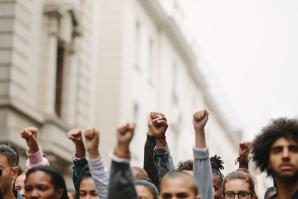
Up to the Task
Nehemiah Emerging Leaders Program founder Scott Syphax on how emerging leaders can help achieve social justice
In June, the Sacramento-based Nehemiah Emerging Leaders Program addressed the recent deaths of George Floyd, Ahmaud Arbery, Breonna Taylor, Stephon Clark and other Black people at the hands of the police in an open letter to the greater Sacramento community.
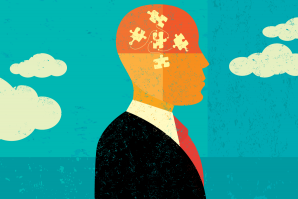
Action Civics
Civic learning belongs at the forefront of preparing students for college, career and civic life
We hear a lot about the bad news: Fewer than 8.2 percent of eligible voters ages 18–24 turned out in the 2014 general election; most Americans cannot name the three branches of government; many young people do not think their civic involvement is worthwhile. But there are pockets of good news all around us. More schools are building on the old adage, “I hear and I forget. I see and I remember. I do and I understand.” We call this “action civics,” and we know it works.
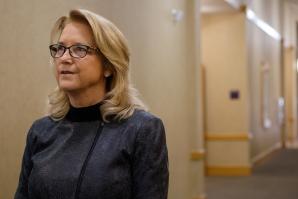
For Women Seeking Corporate Board Positions, It’s Still an Uphill Climb
A new California law is forcing publicly-traded for-profit businesses to get women on their boards. Yet getting tapped for a directorship is no easy feat.



